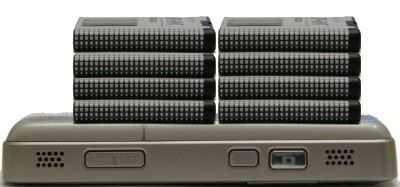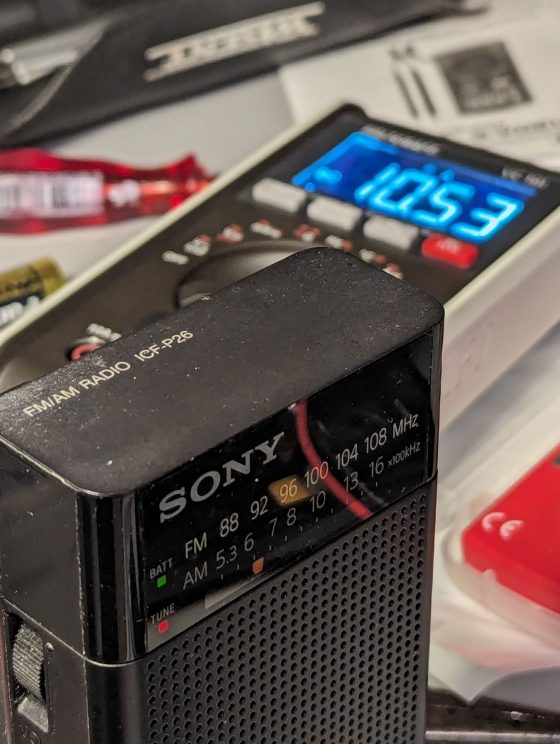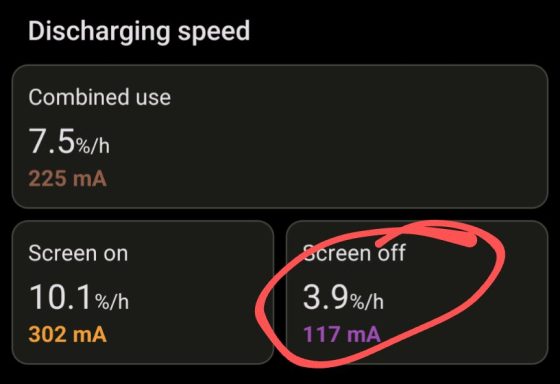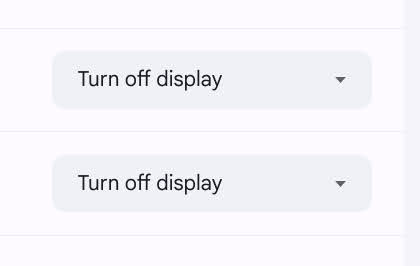A Pixel 6 can stream music using just 440mW of power, which is about the same as a handheld DAB radio player. An ARM-based Chromebook can do it in about double that. Despite the relative complexity of streaming radio over WiFi or even cellular data, it’s still amazingly efficient.
Ultra mobile productivity includes efficiency, especially if you’re traveling. I’ve tested many many devices over the last 15 years and we’ve come a long way.

Where I was impressed at a laptop that allowed me to write articles at under 10W or stream audio using 6W, I’m now seeing a lot better.
Smartphones have, by requirement, led in terms of efficiency although the huge density increase in batteries over the last ten years and efficient screens have helped to provide long battery life amid more complex usage scenarios giving the OS developers more space to play.
Music, a basic requirement.
At the extremely efficient end of mobile connectivity is the consumption of FM radio. I’ve got a pocket Sony FM radio that consumes just 50mW playing radio via the speaker. A 2023 Nokia 105 of mine will do it in 150mW.

Unfortunately, FM transmission, like 2G and 3G, are on their way out so what’s the next best thing for media consumption? Streaming audio over the internet.
Streaming audio means a lot of things. Podcasts, thousand upon thousands of global radio stations and all the music you can care to queue via music streaming services. As a form of entertainment it’s difficult to beat, which is why I’m pretty happy with these results
After a lot of testing this weekend I’m surprised how efficient streaming radio is. The power requirements are as negligible as FM radio in a room-listening scenario.
I’ve been using a Pixel 6 (2021 launch) for this test and my results show that you can stream music using under 450mW. That’s about 36 hours continuous on a fully charged Pixel 6.
You’ll have to go to airplane mode, extreme battery saver and turn the screen off, but it’s not such a complex setup.
Four working days of music on one charge is pretty impressive and given the low costs of smartphones and the breadth of choice of audio sources it’s arguably better than the digital broadcast alternative, DAB+.
Pixel 6 streaming music test
Measurement app: Accu Battery Pro which measures power at the charge controller.
Deep sleep on a Pixel 6 uses about 40mA (approx 150mW)
Battery optimised music streaming: 120mA. (approx 450mW)

Assuming 90% battery capacity health, that’s 36 hours of continuous streaming over WiFi or over four days of streaming during typical work hours
The power figures here relate to a Pixel 6 in extreme battery saver mode, aircraft mode, WiFi on, screen off and speaker volume at low. I tested with both TuneIn (remote source) and BubbleUPnP (local source.)
Lenovo Duet 3 streaming music test
There are a few ways to test this. I have disabled sleep but use the keyboard to trigger screen off and lock screen. I have enable battery saver but I’m not sure if this has much effect in lock-screen and screen-off mode.

I used Chrome and the BBC iPlayer website to stream BBC6 Music. Chrome 0S version 130.
The firsts test indicated, via Chromebook diagnostics, a 110mA – 120mAh drain from the 7.7v battery. That’s around 900mW, or about 30-35 hours from the 29Wh battery. This is using the speakers because theres no passive headphone output on the Duet 3. Speakers like this generally take 30-50mW of power at the very low volumes I tested at
In a second test I measured percentage battery drain over time. Expected drain was 18 minutes per %. Measured drain in a first short-duration test was between 1% and 3% in 28 minutes. In a longer test there was a 14% drop over 259 minutes. This confirms the 900mW drain and around 18.5 minutes per percentage battery drain.
900mW is double that of the smartphone with a similar ARM based architecture.
Important note on music volume
A personal background level of music can be achieved with around 100mW of power going to a small speaker.
Room-level background volume requires about 1W.
A Pixel 6 appears to be able to deliver 2W into the speakers.
For a full frequency range much more power is needed. A small echo dot is rated at a maximum 15W and it goes up quickly from there with HiFi and PA equipment.
The 0.5W of power needed to receive an audio stream via WiFi is, in these room-level cases, a negligible power requirement.
In-ear headphones/ buds can deliver good levels of volume and frequency range in the 50mW range. In this case, the 0.5W power needed by a smartphone is a significant power requirement and many times more than a small and efficient FM radio receiver.
And one more thing…the Pixel 6 and Duet 3 needs an active USBC DAC to deliver audio to headphones, probably negating much of the power efficiency advantage of headphones.










